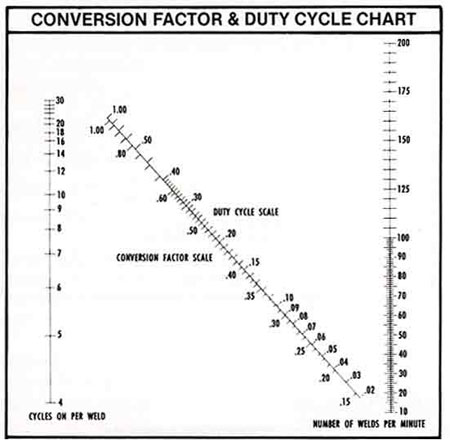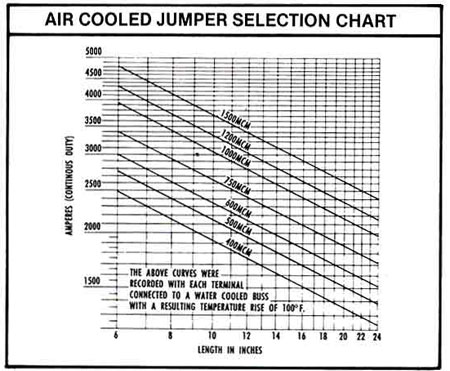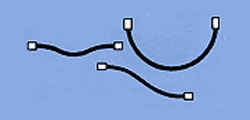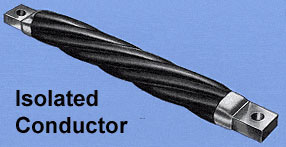Air Cooled Jumper Cable Manufacturer & Exporter
Air Cooled Sub Cable Manufacturer & Exporter








An extra flexible rope type secondary conductors with connectors swage formed on each end for maximum flexibility and cooling. Each cable or secondary shunt is dedigned & built to perform with maximum efficienct and economy in its intended application, Air Cooled jumpers are required to electrically connect diatant points which move in relation to each other. such as
These cables are immensely used in welding applications and highly demanded in the market. Offered products are manufactured using premium quality raw material and modern techniques keeping in mind the defined industry standards. Available in different specifications, the offered products can be purchased at meager costs.
Features :
TerminalDimensions |
MCM |
|||||||
300 |
400 |
500 |
600 |
800 |
1000 |
1200 |
1500 |
|
B |
11 |
11 |
13 |
15 |
18 |
21 |
24 |
32 |
W |
32 |
32 |
32 |
32 |
32 |
32 |
38 |
38 |
Sleeve O.D. D |
36 |
36 |
38 |
40 |
45 |
50 |
55 |
65 |
Advantages of using Air Cooled Jumper Cable
Industrial Applications of Air Cooled Jumper Cables
Air Cooled Jumper Cables Sizing
Use the following method to determine what size cable should be used for your application. First you use the Conversion Factor chart to determine your “Continuous Duty Current”; then you read the correct size cable off the second chart. An example is worked out below.
Example Data:


Installation Guidelines

Good Working shapes for Air Cooled Cables
Air cooled jumpers should be installed in such a manner that the mechanical stresses at the terminals will be reduced to a minimum. This may be accomplished by installing the jumper with a little slack, which will allow the jumper to flex freely.
Bend radii should not be sharp, and should be distributed throughout as much of the jumper as possible, in order to distribute the frictional wear over the greatest possible area. See the below charts for suggested minimum bend radii.
Minimum Distance from the end of the hose to the point where the bend radii should start is :
More Specifications D.C. Resistance of Single Conductor Water Cooled (and Water Cooled) Cables
| MCM | D.C. Resistance |
| (Ohms per foot at 70 °C) | |
| 350 | .0000376 |
| 400 | .0000322 |
| 500 | .0000263 |
| 600 | .0000217 |
| 750 | .0000172 |
| 1000 | .0000130 |
| 1200 | .0000110 |
| 1500 | .0000088 |
| 2000 | .0000066 |
Each air cooled cable is manufactured with completely silver plated terminals, which can be manufactured up to 3-7/8" long for special applications.A chart for sizing the correct gauge cable is on the right of the page, as well as guidelines for installation.
To order an air cooled cable, you need to know several specifications for that cable. The following will walk you through this process.
Step 1: Select Styles of Terminal Ends
End Combinations: The first “DJ” stands for Dry Jumper.The part number after this describes the two ends.

Terminal Thickness
MCM |
1.250" Wide |
1.375" Wide |
1.500" Wide |
400 |
0.405" |
0.370" |
N/A |
500 |
0.510" |
0.465" |
0.425" |
600 |
0.540" |
0.490" |
0.450" |
750 |
0.650" |
0.590" |
0.545" |
1000 |
0.825" |
0.750" |
0.690" |
1200 |
0.965" |
0.880" |
0.805" |
1500 |
1.165" |
1.060" |
0.975" |
2000 |
N/A |
1.575" |
1.440" |
Step 2: Taking Measurements

Cables with isolated, individually wrapped conductors increase cable life by preventing common failure points :

Increased strand life at the cable terminal is the advantage of a stabilizing collar. It slightly increases the minimum flex radius for the jumper, reducing over flexing.

36 AWG copper rope stranding and an extra flexible protective cover are used to create an extra flexible jumper. The result is a jumper that is over twice that of a regular jumper. This makes it ideal for robotic applications and where limited space makes standard cables a hard fit. The DJ-XF is available in 750, 1000, and 1200 MCM. Other options include a perforated cover or a special Hypalon high temperature cover, able to withstand 300°F to -30°F.
A wide variety of high current air cooled power cables ideal for many different industries and applications including resistance welding, resistance heating and bus bar systems.
Each cable and jumper is designed and built to perform with maximum efficiency and economy, providing longer cable life and greater flexibility over standard jumpers.
Our in-house engineering team can manufacture high current air cooled power cables and jumpers to customer specification or we can assist with custom design concepts and fabrication.
Air Cooled Cable Specifications
Air Cooled Cable Options:
Air Cooled Cable with Isolated Conductor
DJ-IC Air Cooled Jumper Air Cooled Cable with Isolated Conductor DJ-IC Air Cooled Jumper
Isolated Conductor type dry jumpers are identified by “IC,” The Air Cooled Jumpers increase cable life by correcting the common causes of failure as indicated in the following:
Air Cooled Cable with Stabilizer Collar
DJ-SC Air Cooled Jumper
Increases dry jumper life by reducing strand failure at the cable terminal; this is accomplished by a slight increase in the minimum flex radius which in turn reduces overstressing.
Extra Flexible Air Cooled Cable
DJ-XF - Extra Flexible Air Cooled Jumper
Ideal for these Air Cooled Cable and Jumper Applications:
Air and Water Cooled Jumpers are required to electrically connect distant points which move in relation to each other and ideal for:
